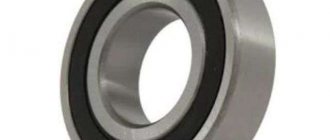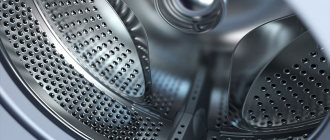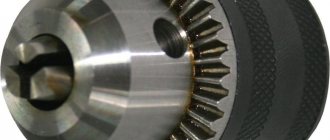To make daily use of the toilet comfortable, a special pad is used - the seat. Moreover, most of them are equipped with a lid. It is the breakdown of the latter that one most often encounters. Agree, there is little pleasure in a broken fastener.
But even the usual fastening of the toilet lid often raises questions among people. No wonder, considering that depending on the model, the fasteners and configuration of toilet lids differ radically.
Why not call a plumber over such a trifle? Do you want to replace the seat yourself, but are you afraid of breaking the new one due to inexperience? We will help you figure out the secrets of installing a new seat - the article discusses the main designs of toilet seats and their features.
Detailed instructions for attaching the hinged lid and models equipped with a micro-lift are also provided. For a better understanding of the replacement process, the material in our article is supplemented with visual photos and a video that demonstrates the installation of a seat with a micro-lift.
Types of toilet seat designs
Difficulties with the toilet lid are in second place among the breakdowns of this sanitary device.
Read also: Business lunch for those at home
A few years ago, the toilet seat had a simple design and was limited in the number of models. These days, the plumbing market offers a wide range of products. In addition, the covers can be equipped with additional functions. For example:
- built-in bidet;
- seat heating;
- micro-lift.
Several factors can lead to product failure:
- long-term operation;
- manufacturing defects;
- careless use.
As a result of any of the above reasons, cracks may form on the toilet lid or the fastenings may fail. In both cases, you will need to replace the old toilet seat with a new one. The products themselves have two varieties:
The final stage
At the end of the work, you need to securely fasten the tank, since this is the main part of the toilet and damage to it is unacceptable.
If you wish, you can install the toilet installation yourself. This is a special assembled system with a tank, the height of all elements can be adjusted, so installing the toilet is very convenient.
Recently, toilets with a compact tank have also become very popular; it is located on an elongated shelf of the toilet.
Now we will look at how it is installed:
- Secure the tank to the wall using 2 long bolts.
- Then put a special cuff on the pipe going to the tank; it is supplied in the kit.
- Next, connect the pipe to the tank; first, you need to wrap the thread with fum tape.
- Now turn the cuff back, so all connections will be perfectly blocked by it.
If you have installed a standard toilet tank, then you can use an interesting trick.
We hope that our article will help you in carrying out work on installing a toilet. We wish you success!
Is it possible to repair the old seat or is it better to buy a new one?
In reality, it goes without saying that everything depends on the details of the setting. If your toilet lid simply falls off and there are no cracks in the product, then the reason for the “slamming” most likely lies not in the lid, but in the fact that the tank is installed incorrectly.
Wrong - it is too close to the seat, or at an angle (this simple thing is not uncommon if the tank is taken from another bowl). Under such conditions, only replacing the tank itself will help.
What is the device used for?
A children's toilet seat cover is necessary for convenience. The dimensions of the toilet are designed for adults, so children do not feel very comfortable. Often children are simply afraid of falling into a hole, so they refuse to leave their favorite potty and give preference to the toilet. Of course, there is also special plumbing for children. However, not every family has the opportunity to install such an additional toilet. In this case, a special children's pad will come to your aid.
The device can be attached to the toilet in several ways. Manufacturers often make special mounts that come included. They allow you to hold the accessory on a standard seat. Also, some companies offer Velcro and brackets that securely hold the pad when a standard seat is lowered onto it. How to choose a device? If you decide that you need a children's toilet seat cover, then you need to take many parameters into account. Let's look at them.
Method for removing the cistern lid from an old-style toilet
Most often, problems arise with devices that are no longer produced. Due to the wear and tear of their parts, plumbers have to carry out repairs more than once in a short period of time. However, there are also positive aspects to their repair.
The lid for the cistern of such a toilet is very easy to remove. It is enough just to correctly disassemble the upper part of the trigger mechanism. To do this, dismantle the handle located on the threaded rod and unscrew the washer nut.
Installation work
Removing the old cover
So, a new seat has been purchased, before installing it, you need to remove the old one. This operation will not take much time to complete.
The only thing you may need is some tools:
- Socket wrench;
- Pliers;
- Hacksaw.
Instructions for removing the cover are as follows:
- Regardless of the type of construction, the seat is fixed with two nuts . Before using the tools, you can try to unscrew them by hand.
- If the nuts do not “give”, you should use a socket wrench.
- In some cases, the bolts may turn . To prevent this, they should be clamped with pliers.
- If for some reason it was not possible to unscrew the fasteners, the bolts must be cut off with a hacksaw . However, before taking drastic measures, you can lubricate the thread with silicone or oil and try to unscrew it again.
Structural installation diagram
How to disassemble a toilet for repairs
Most malfunctions are related to the draining and filling mechanisms. To eliminate such damage, you need to disassemble the tank. So first let's look at how this is done.
How to remove the cover
In old-style toilets with a plastic tank, the lid is held on by latches and removed by moving upwards. Sometimes you additionally have to pry off its edges with a screwdriver or other sharp object.
In modern compact toilets, the lid simply lies on the cistern and is secured only by a button. Therefore, to remove a part, you must first unscrew the rim of the button counterclockwise and remove it.
In some toilet models, the mechanism with the button is secured with a screw, which is hidden inside. In this case, pry off the top of the button with a sharp knife or thin screwdriver, and then unscrew the screw and remove the button.
There are also drain mechanisms equipped with a rod with a handle that rises up. To remove it, you need to lift the ball and unscrew it counterclockwise, holding it by the rod.
How to remove drain fittings
First, you should turn off the water at the entrance to the toilet tank, and then grab the flush mechanism with your hand and, turning it slightly counterclockwise until it clicks, lift it up. Sometimes there is a lock on the fitting that needs to be removed before removing the mechanism.
To replace the drain valve with fittings of a different design or manufacturer, you need to completely remove the mechanism, including the seat. To do this, you need to remove the tank and unscrew the large nut from the bottom.
The side-connected fill valve is very easy to remove. It is enough to remove the cover and disconnect the flexible connection, and then unscrew the fastening nut from the outside and pull out the mechanism.
It is more difficult with the bottom connection fittings. First, remove the flexible line and the tank cap. Then wash off the water and remove the drain valve. Next, unscrew the nut that secures the filler valve from below and remove it. If the water has not completely drained, it is better to substitute a basin or other container so as not to spill everything on the floor.
How to remove the tank
In old-style toilets it is plastic and can be removed quite easily. First, turn off the water supply and wash off the residue, and then lift the lid and unscrew the screws that secure the tank to the wall. After this, unscrew the flexible hose and the drain socket nut at the bottom of the tank.
On compact toilets, the tank is attached to the bowl shelf, so it can be disassembled differently. The first step is to turn off the water and press flush. Then remove the lid, remove the drain and fill fittings and remove any remaining water with a sponge or rag. Next, unscrew the flexible hose, as well as the fixing screws of the tank from the bottom of the toilet.
Replacing and adjusting the fill valve
Replacement involves unscrewing the nut securing the old valve and tightening a similar nut on the new valve. Of course, there must be a rubber gasket on the inside of the tank to ensure a tight seal.
However, there are a couple of nuances associated with installing the fill valve.
- Bottom fittings are often equipped with a fine plastic filter, which must be placed between the fill valve and the hose. Throw it away immediately: it will constantly become clogged with fine sand, which is safe for the operation of the valve. A coarse filter at the entrance to the apartment is much more effective.
- The flexible hose is connected without tension or bending with a small radius. The load on the fitting will significantly reduce the already short service life of the hose.
Attention: when tightening the union nut, do not use too much force. Not only are they unnecessary for soft padding; Excessive force can also cut off the threads on the valve.
How to adjust the valve actuation level in modern kits?
There are two options.
- The float can move with some effort along a plastic rail with projections
. To raise or lower it, just move the rack to the wider part of the hole in the float slot.
- Screw adjustment is no less common
. The float is adjusted by turning (using a screwdriver or manually) a long plastic screw.
( 2 ratings, average 4.5 out of 5 )
How to troubleshoot compact toilets
Constant leakage into the toilet
If water flows into the bowl in a thin stream all the time, it means that the fill or drain valve is not working. If the first one breaks after filling the tank, the water does not shut off, but if the second one is faulty, the collected water is not retained by the valve.
To determine which valve is not working, you need to press the drain and observe:
- If there is no leakage when you fill the water, but a trickle appears after the tank is filled, it means that the filler fittings are faulty.
- If water starts flowing immediately after pressing the flush button, the reason is the drain valve.
In very rare cases, both mechanisms do not work simultaneously. Overflow can also occur due to incorrect setting of the fill valve - how to adjust it is described at the end of the article.
What to do if the fill valve breaks down
To troubleshoot the problem, you need to remove the tank cap and remove the filling mechanism. Next, you need to unscrew the valve nut and carefully remove the rubber membrane from it. Remove rust and scale deposits from it, as well as from the valve seat, with a toothbrush, then rinse well with water. If the channel inside is clogged, clean it with a thin wire.
In old-style tanks, remove the cap from the valve, pull out the rocker arm axle and remove the problematic part. Use a thin knitting needle or wire to clean the channel and then rinse with water.
After cleaning and reassembling everything should work. If this does not happen, you will have to replace the membrane or the entire fill valve assembly.
Gaskets for this mechanism are rarely sold separately. Therefore, try simply turning the old one over: it will still serve for some time. Alternatively, you can sand it with sandpaper and then glue a circle of bicycle inner tube or other thin rubber on top.
What to do if the drain valve breaks down
First of all, you need to turn off the water, drain the liquid from the tank and, after removing the residue with a sponge or rag, remove the drain fitting. Next, you need to remove the gasket and clean it of rust. If possible, it is better to replace the gasket with a new one.
If you can’t find the same one, try turning it the other way or putting some kind of weight on top of the valve, like a large nut, so that the membrane is better pressed against the seat. If all else fails, you will have to replace the entire drain mechanism.
The tank is not filled enough
Sometimes, in filling mechanisms with a float inside the glass, the valve plug gets jammed due to rust. This leads to the fact that when filling the tank, water enters the glass from below, rather than overflowing over its edge. As a result, the valve closes prematurely and the tank does not fill to the required level.
To solve the problem, you need to turn off the water, wash off the residue and remove the filling mechanism. Next, remove the bracket and remove the valve plug from the glass. Then you need to clean the part and its seat from plaque, and also make sure that the plug fits well to the glass and moves freely.
Leaking from under the tank
Water leakage from the bottom of the tank can occur if the cone gaskets of the mounting bolts or the large rubber ring between the toilet shelf and the tank have failed.
In both cases, you need to turn off the water and press the flush, then remove the lid and remove the filler and drain fittings. After removing any remaining water, unscrew the mounting bolts and carefully inspect all seals for cracks.
It is advisable to replace the gaskets with new ones. If you can’t find the same ones, you can thoroughly clean them, dry them and install them in place, after lubricating all joints with silicone sealant.
The button gets stuck or stuck
A problem with the flush button is usually caused by the fact that when pressed fully, the stem catches on the valve mechanism and jams. However, often replacing the button itself does not give anything. There are several solutions.
The simplest thing is to unscrew the button, press it a little, pushing it down a couple of millimeters, and then put it in place, holding it in this lightly pressed position. This way the part looks a little recessed, but thanks to the reduced stroke it will not jam at the extreme point.
For the same purpose, you can cut a ring 2–3 mm high from a plastic bottle cap and place it under the button. To do this, use a screwdriver to press the latches on the sides of the mechanism and pull the button out of the housing.
Useful tips
- After removing the lid, it is best to remove it from the toilet altogether. The lids are made of fragile porcelain, so it can be easily damaged in a small toilet space.
- Put the lid back only when you are completely sure that the tank is working properly. Fill the tank with water and perform several flushes.
- Even if you have not touched the float system, you still need to make sure how it works; while the tank is filling with water, watch the movement of the float.
- Make sure that the valve shuts off the water well and does not overflow.
- Today there is a wide variety of imported plumbing fixtures on the market. Some models are equipped with a microlift. The main task of the device is to ensure smooth closing of the lid. These are species such as Gustavberg, Ifo, Jika, Ido. There is no reason to be afraid of an imported manufacturer; you need to act in exactly the same way as described above. If the buttons are non-standard, square, triangle, etc. you need to take them out and see what is underneath them. Most often you will have to unscrew a screw or nut.
What is double flush
To wash away waste and clean the bowl itself, a flow of water of a certain power and duration is required. Consumption rates for plumbing fixtures have long been determined and calculated. However, in many cases such power and size of the jet are simply not needed. But the regular model does not involve any adjustment.
The dual flush model allows you to reduce water consumption and ultimately pay less for using your water supply.
We are talking about a special mechanism that creates 2 drain modes:
- economical - only half the standard volume is supplied;
- normal – full volume of water.
The flow power in both cases is the same, but the different values allow for savings. The most famous representatives of this category include products from Roca and Jika. The adjustment is made by pressing the double button located on the drain tank: the part labeled ½ - economy mode, or the larger one - normal.
A variety of models with this mechanism are produced: floor-standing, for example, Roca Victoria, compact JikaLyra, hanging Gustavsberg.
Installation
To install a toilet, you need the necessary tools and equipment.
Equipment
Before you figure out how to install a flush cistern to the toilet, you need to acquire the necessary equipment. You need to select it according to the following parameters:
On fixing the tank. It can be combined with a bowl, hung on a wall or installed hidden.
By supplying water to the tank. The inlet can be from the back, side or bottom. The lateral approach is the most common. The bottom liner allows you to carefully line the pipe, but makes installation difficult. The rear supply is almost never used.
By type of fittings. There is equipment with a lever, a button. The last type is used most often, it helps to save water consumption.
Also for installation you will need:
- shut-off mechanism - mounted on the water supply system, it can be used to shut off the water entering the tank from the general water supply network;
- liner - connects to the inlet pipe, can be steel, copper or rubber;
- drain mechanism - mounted inside the tank to regulate the drainage and collection of water;
- sealing tape – used to seal joints.
Tools
- drill and drill bits (one for ceramics, the other for concrete);
- wrench for connecting the water supply;
- core, for drilling marks, to avoid sliding of the drill along the plane;
- a rubber spatula to remove remaining sealant;
- pencil for marking.
When does it become necessary to open the toilet tank lid?
Problems with the toilet are an unpleasant thing, it affects the amount of water consumed, and the payment increases. But it’s not always possible to call a plumber; you have to try to fix it yourself. Most often, when a toilet malfunctions, the flush valve of the cistern breaks. The damage can only be repaired by opening the lid. Usually the toilet design has a similar design, but some modifications differ from the rest.
In toilet bowls of the latest models, there is usually one solid or one composite button on the top surface, which prevents the tank lid from being easily lifted.
And it can be quite difficult to figure out how to open the toilet lid.
In older models, this is easy to deal with; just lift the cover up or first unscrew the top of the trigger mechanism. In modern ones, usually on the upper plane there is one solid or one composite, of two or three parts, a button and a push-button glass, which prevents the lid from simply being lifted.
A toilet cistern with a button is often considered a non-separable structure, most plumbers try to convince us of this. In fact, it is quite simple to open it and solve some minor problems associated with the unstable operation of the mechanism.
Brief overview of manufacturers
The variety of products on the Russian market is explained by the presence of a large number of foreign manufacturers, since there are quite a few well-known and proven domestic brands. Among Russian companies producing toilet accessories, we can highlight such brands as:
- SANITA LUXE;
- Santek;
- Keramin;
- IDDIS.
Seat cover Sanita Luxe CLASSIC white thermoplastic. The cost of a set with a toilet is 5,750 rubles. A model with a microlift costs 150 rubles. more expensive than without it
Real high-quality products are presented to the Russian market by well-known foreign brands:
- Geberit (Switzerland);
- Cersanit (Poland);
- Laufen (Switzerland);
- Roca (Spain);
- Ifo (Sweden);
- IDO (Finland);
- Jacob Delafon (France);
- Villeroy & Boch (France);
- Vitra (Türkiye);
- Jika (Czech Republic).
The Laufen company is focused on producing luxury sanitary ware and accessories, and is also concerned about the problem of water conservation, so the products surprise with both their perfect design and technicality. The assortment includes many designer models for floor-standing and wall-hung toilets.
Model in pink color Laufen Mimo for a wall-hung toilet with a micro-lift, the color of the fittings is chrome, there is the possibility of quick dismantling. The lid is treated with an antibacterial coating. Cost – 8,600 rubles.
The Geberit company aims to produce the most comfortable products and every year surprises with new modern models with electronic support. Of course, the cost of seat covers is quite high and reaches 160 thousand rubles, but there are models for 25-30 thousand rubles.
Geberit bidet lid from the AquaClean collection with automatic rinsing, heating, infrared sensor, spray setting, hairdryer and remote control. Cost – 159 thousand rubles.
The Spanish company Roca specializes in the production of mid-level plumbing fixtures, but from high-quality materials. The assortment is varied - from inexpensive models for 3-5 thousand rubles. to electronically controlled seats for 50 thousand rubles.
Roca America seat cover in cherry wood-look Thermodure. Microlift, metal fastenings, convenient quick removal system. Cost – 11,500 rubles.
If you want to purchase an inexpensive and safe model, pay attention to the products of the Czech brand Jika. The cost of most models is 1.5 thousand rubles
– 5 thousand rubles. Classic type products, environmentally friendly, easy to use
rub. – 5 thousand rubles. Products of a classic type, environmentally friendly, easy to use.
The Jika Vega seat cover is white in a modern style, with an antibacterial coating, without a microlift. Material: duroplast, chrome-plated fasteners. Cost – 2,300 rubles.
Some useful tips for choosing:
As you can see, the choice is quite large and largely depends on financial capabilities. If funds allow, you can purchase more comfortable models with additional options, but there are also convenient, inexpensive models in a classic style with a microlift. When purchasing, do not forget about the size, quality of the material and the suitability of the style of the product to the environment.
From time to time you still have to change the toilet seat along with the lid. The process is actually simple and easy to do yourself. Even if you have never done this, the work will not be difficult.
Today our task comes down to telling you in clear language how to properly remove the old seat, what needs to be unscrewed and where, and then showing with your fingers how to assemble and screw on the new one.
Features of new designs
The most popular type of such products remains “Compact” toilets, in which the tank is located directly on the shelf of the bowl. Previously, there were only two control mechanisms for plumbing fixtures: a ball (handle) connected to a bulb using a retractable rod, or a lever that was located on the side surface of the tank.
Disassembling the old-style design was a simple matter: you just had to unscrew the cap from the stem. After this operation, you can remove the cover without any problems. Now almost all existing models have another type of control over the operation of the device: these are the most convenient buttons. Tanks can be equipped with:
- one button, which provides for draining the entire volume of water at once;
- two buttons, or one key, but divided into two autonomous parts.
The first toilets are relatively simple, but their main drawback is the irrational use of water. The second option is much more complicated, but it has an undeniable advantage over single-button models. Such designs have a more complex control system, but they guarantee a quick payback for the toilet, because they allow the use of plumbing in two modes - normal and economical.
- If one button is pressed, the water is completely drained from the container.
- When the second one is pressed, only part of the water pours out. As a rule, this is half the volume.
Thus, a dual-mode unit makes it possible to save a certain amount of water, and this is important. High liquid consumption for household needs is a problem that grows along with utility bills. Two-button models allow you to achieve significant savings.
There is another variety that is not very easy to use. These are tanks that have two modes, but only one key. The dosing of liquid into them is ensured by different durations or intensity of pressing the button when the water needs to be drained.
Materials for making tanks
In order to create an ideal corner where you can take water procedures after physical work in the country, you need to choose the right container for a summer outdoor shower, therefore, you need to know what materials the tanks are made from. Today on sale you can find:
- plastic containers;
- iron tanks;
- galvanized steel tank;
- carbon steel tanks.
In addition, each of the tanks can be supplemented with a heating system. It is necessary to know the characteristics of materials, since they directly affect the durability, functionality and reliability of the entire structure as a whole. A standard container holds from 40 to 200 liters of water - this volume is enough for a family of 3-4 people to wash themselves well.
How to choose a toilet lid
The stores offer a wide range of toilet products. Buyers sometimes pay little attention to this, but user convenience depends on this issue. The most common modifications include:
- soft toilet seat;
- hard plastic seat;
- toilet lid with microlift;
- automatic products;
- seat with bidet function;
- heated toilet lid;
- baby cap.
The choice depends on the financial capabilities and requirements of the client.
Selection criteria in case of replacement
If it so happens that the question of replacing the toilet seat has arisen, you need to choose a toilet seat that matches the existing plumbing fixtures. It is recommended to take measurements of the plumbing fixture in terms of dimensions and shape. You should also clarify the location of the mounting holes under the seat.
The width size is measured at the points of greatest “run-up” of the structure. The length dimension is taken from the edge of the front part of the curb to the point of the center line passing between the centers of the holes intended for attaching the toilet seat.
Standard dimensions of plumbing fixtures for different designs. Based on these parameters, a toilet seat is selected in case of a new installation to replace the old toilet seat. If you know these dimensions, choosing a seat of a suitable configuration is easy.
Often, toilet owners who have had to change the toilet seat prefer to choose more advanced models instead of the standard design. This choice is explained by their desire for novelty.
Meanwhile, new products “with heating”, “with backlighting”, “with motion sensors” in practice turn into even bigger problems. A serious manufacturer of plumbing fixtures is not yet in a hurry to offer such an “exclusive” to the buyer. Such proposals usually come from Chinese companies.
Removing the old seat
Before removing the old seat, you need to prepare the necessary tools. The degree of complexity of the work will depend on the material of the bolts. If they are plastic. then you can simply cut them off with some old knife, previously heated over a fire. Even if melted plastic gets on the toilet, there won’t be any special problems with its removal.
Broken lid fasteners are the most common reason for repairs.
We tried to tell all the secrets of repairing a toilet with our own hands in our review.
Brass bolts can also be removed relatively quickly. If the nut on them does not give in even with a little force, you should moisten the threads with a drop of kerosene or kerosene lubricant (from a car dealership).
It is more difficult to deal with steel bolts. High humidity in the restroom can have a negative impact on them - they become rusty and difficult to handle. You can remove them using one of two methods.
- Carefully cutting off the heads with a metal grinder.
- Cutting through with a hacksaw for metal, having previously placed plywood or thick paper under the cut area so as not to touch the toilet itself.
↑ back to contents
Conclusion
As we found out, anyone can dismantle and install a toilet seat on their own. The only thing is that the procedure should be performed carefully, especially if tools are used for this purpose, so as not to damage the toilet itself. (See also the article Valve for the flush tank: features.)
You can get some additional information on this topic from the video in this article.
Did you like the article? Subscribe to our Yandex.Zen channel
Microlift design
The microlift is sold together with the toilet lid. It cannot be purchased separately. Toilet lids equipped with closers are made of plastic or its modern analogue - duroplast. Although this polymer looks like plastic in appearance, its quality characteristics are closer to ceramics.
The material for the manufacture of seats equipped with a microlift is duroplast - a modified polymer that can maintain a stable temperature when exposed to heat.
Fix the device to the toilet in a rigid way. But to ensure smooth operation of the mechanism, the device can be equipped with a function that provides air shock absorption. For this purpose, the seat is supplemented with special compartments, which are filled with shock-absorbing silicone.
- A rod that securely holds the rigid plastic installation.
- A spring whose force balances the weight of the structure.
- Hinged micro-lift mechanism that allows changing the position of the lid.
- Lid and seat made of durable polymer.
In more expensive functional systems, the basis of the mechanism is not springs and rods, but pistons and cylinders. Structures of this type are classified as non-removable.
Smooth closing/opening of the mechanism and fixation of the toilet lid in the desired position is ensured by a micro-lift hinge mechanism equipped with a spring
Functional systems, in which seats and covers are supplemented with a built-in microlift, are produced by many manufacturers of sanitary equipment. If desired, you can purchase and install a universal device that can provide several functions at once:
- adjusting the temperature of incoming water;
- possibility of seat heating;
- high-quality washing, enema and massage;
- extraction of unpleasant odors followed by deodorization.
Many models are often equipped with a convenient self-cleaning function, thereby minimizing the participation of household members in the process of using a plumbing fixture.











